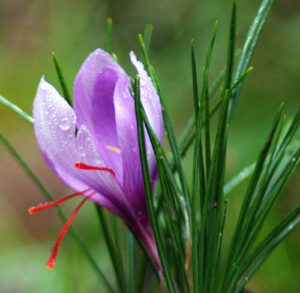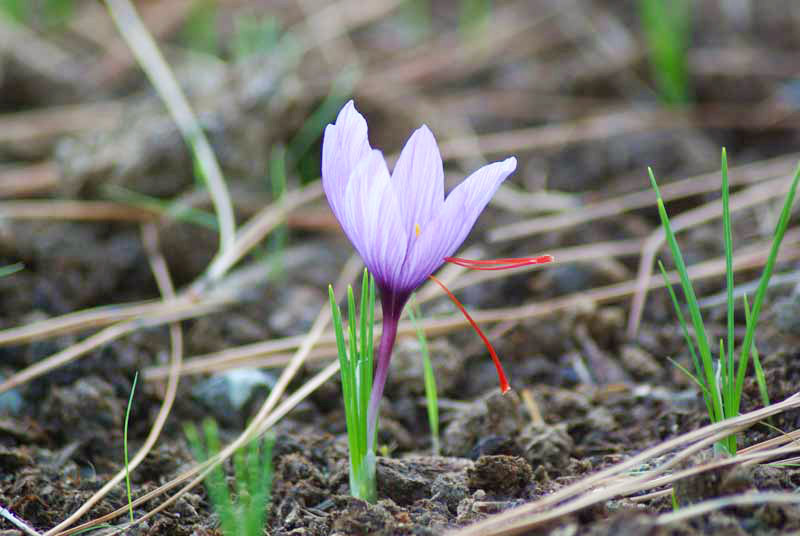
To plant Saffron bulbs in a pot: Use a 3-gallon-size plastic or ceramic pot, placed solidly on the workbench, filled up to 3 inches from the rim with the potting mix. I like to use 1/3 organic compost, 1/3 clay soil and 1/3 coarse, sharp sand as my special Saffron potting mix, but honestly any good quality fast-draining potting soil will do. If the soil is dry and/or fluffy, make sure to moisten it slightly beforehand and tamp it down before setting your bulbs on it. Lay the bulbs out with base of the corm down and shoots pointing straight up. 6 corms fit nicely in a 3-gallon pot, giving the plants plenty of room to grow. Space the bulbs out evenly and then cover over with more of the same potting soil, filling the pot up to the brim and tamping firmly to finish. Label the pot with the identity of the contents (Saffron!) and the planting date.
How to care for Saffron: First, understand the life cycle. In the fall, after the corms are planted, they send up pointed dark-green shoots and the strongest plants also make flowers. Flowers occur from September to November. The plant remains in leaf from fall all the way through to April, which is when it goes dormant once again. During the growing season, the primary corm will increase in size and is also likely to produce a ring of fertile cormlets. During summer dormancy, the bulbs may be dug up, separated to make more plants, and replanted in fresh soil. Good drainage and a warm, sunny exposure are necessary prerequisites to success with saffron. The plants like to be protected from freezing and watered relatively frequently during their growth period. Summer dormancy should be warm and dry. Emergence and flowering occurs simultaneously in the fall of the year, and at this time relatively dry conditions are favorable. If you’re growing in pots, place the pots in a full-sun position, protect from heavy rain, and water very occasionally.
How to use Saffron: I associate the unmistakable sweet fragrance of Saffron with holy temples I have visited. The spice cleanses the soul and uplifts the spirit. Only a very tiny amount need be used–the spice is concentrated. A couple of strands of saffron thrown into the rice pot while it finishes cooking will completely transform plain white rice into ambrosia. Too much can be overpowering. Saffron is also used in herbal medicine, a flavoring agent which masks the odor and taste of obnoxious herbs, an analgesic and antiseptic for teething infants, a sedative for nervous disorders, an antispasmodic for painful periods or digestive woes. A few strands of saffron may be added to warm milk or water, covered and allowed to steep for a few minutes, then taken in tiny sips.
